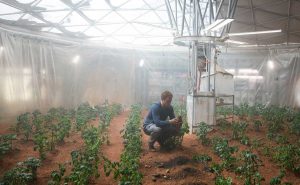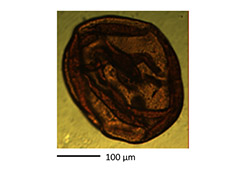Who said that we are going?
Around a year ago, the South African-born billionaire, Elon Musk, announced his plan for the colonilization of Mars in a live video that went viral. Musk planned to land on Mars in the next decade and get it ready to host life by 2030. Since then, many have questioned the feasibility of the plan, including an esteemed astronaut who hypothesized that the project would stop as soon as Musk realizes the investment is not rewarding.
Are we even close?
According to researchers from the University of Lisbon and the University of Porto, we are. In their paper that was published on 18 October 2017, in the Journal Plasma Sources Science and Technology, Vasco Guerra et al. argue that Mars has nearly ideal conditions for CO2 dissociation to O2 and CO in Plasmas. As a result, production of O2 in Mars from CO2, which constitutes 95.9% of the Martian atmosphere, is possible.
Wait…what?

This is an illustration of a plasma lamp. When current is passed through plasma, amazing colours are observed. Uploaded by Joshua_Willson to Pixabay.com April 26, 2017
Basically, plasma is a state of matter where positive gas ions are surrounded by free negatively charged electrons. It can have interesting applications, such as plasma lamps. This state does not necessarily require high temperaturet. For example, non equilibrium low temperature plasma is a very interesting field of study and it is the type that Guerro describes as “the best media for CO2 dissociation”. There are several studies about how plasma assists the dissociation of pure CO2 in the presence of a catalyst, usually TiO2. First, plasma supplies energy to drive the highly endothermic dissociation of CO2 through electron direct impact, in which an electron from the plasma transfers its energy to the CO2 molecule by collision, which aids the break of the C=O bond. Second, plasma adjusts the particles to the catalyst’s interface. Third, low temperature hinders the reverse reactions.
Why mars?
That is exactly Guerro’s argument. Guerro states that the atmospheric pressure of mars, 4.5 Torr, replaces the use of vacuum pumps that are necessary for the process on earth. Moreover, the average Martian atmospheric temperature, -63 oC, enhances the energy transfer from the plasma to the CO2. Also, Guerra mentions that the operation only requires as low as 20 W, which can be achieved on mars. Finally, the Martian atmosphere consists of 95.9% CO2, so O2 should be produced from this abundant source. Guerro says that the byproduct of this reaction, CO, can be used to fuel the return trip. In this way, the CO2 decomposition provides two benefits. Also, look at how beautiful it is:

An illustration of Mars, which is very beautiful. Uploaded by GooKingSword at pixabay.com
Personally, I used to think that if we can fix the atmosphere on Mars, then we should be able to fix it on Earth first. However, it turned out that Mars is helpful, but Earth is not. I started packing already…
By: Maged Hassan




